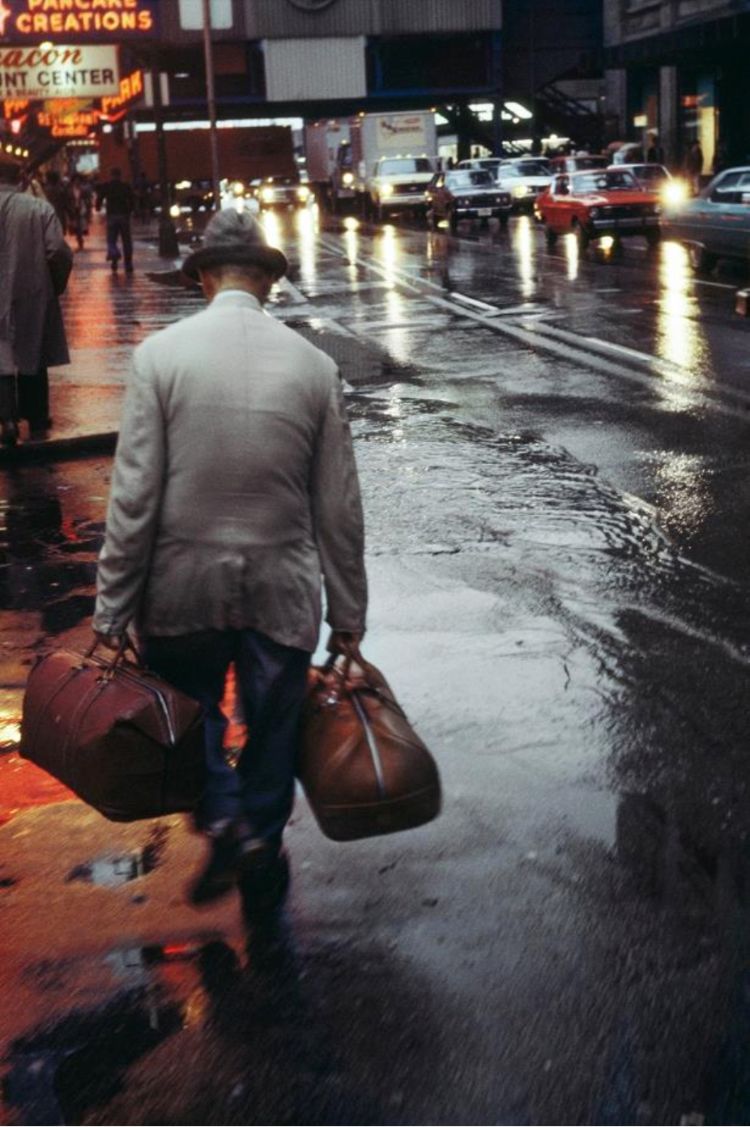With their shop signs, neon advertising, city streets, posters and skyscrapers, Vivian Maier’s photographs tell the story of post-war America itself. They point to the country’s dizzying modernism and rapid expansion.
This attention paid to the vernacular, to America’s visual vocabulary, didn’t begin with Maier. Documentary photographers such as Walker Evans and Berenice Abbott focused on and framed their imagery through similar signifiers. Evans in particular was fascinated by signage, advertising and posters that he encountered. These were often focused in and around America’s South which he photographed throughout the Depression era of the 1930s. This attention to commercial insignia only heightened the turmoil and devastation wrought by the decade’s economic failures. In contrast, Abbott’s project from the same time Changing New York focused on the fledgling development of New York into a modern metropolis, playing up the contrast between the modern city, with its skyscrapers and iron bridges, and the old tenements and brownstone buildings of Manhattan. Their projects anticipate the modernism of Maier’s imagery.

New York, NY, 1954. Vivian Maier
The Second World War cemented America’s position as the economic world power; the prosperity of the 1950s saw increased urban expansion, mass production and infrastructure. Maier’s imagery records every aspect of this development. New York, NY, (1954) shows skyscrapers and a large Coca Cola advertisement loom over the photograph’s subjects. The buildings and advertising imagery become more than just a backdrop, they are the signifiers that make up the urban environment. Similarly, Randolph Street, Chicago, (1977) focuses on a stooped figure walking down the rain-soaked street surrounded by neon signs whose bright colours reflect in the pools of water that collect in the road. In these images the vernacular becomes the landscape.
Maier does not simply record the iconography of modernism in her street photography, she uses these symbols formalistically, they are the visual language with which she creates her imagery. Untitled, (c.1977), for example, emphasises the repetition of pattern on a woman’s skirt, amplified by the stack of newspapers she stands next to. The production line is writ large across the image. In a number of her images too, she uses the skyscrapers and bridges as framing devices for her composition, they become the limits of Maier’s representation of the urban environment.
Maier’s huge archive is testament to America’s industry and production, to the hyper-marketisation of its environment. From her images you can trace the development of America’s contemporary landscape, with its increased advertising, cars and high rises
(By Alexandra MacKay)
